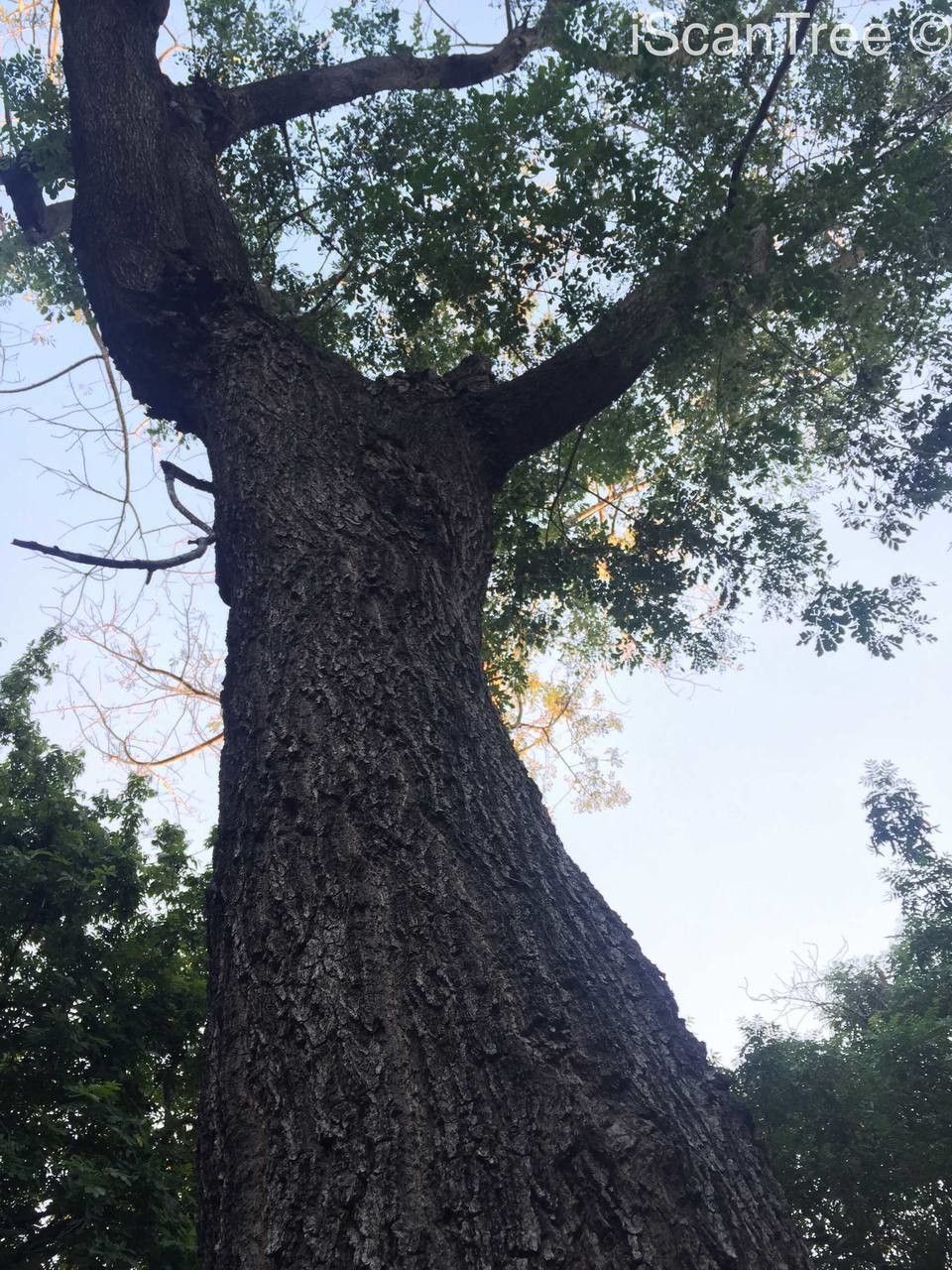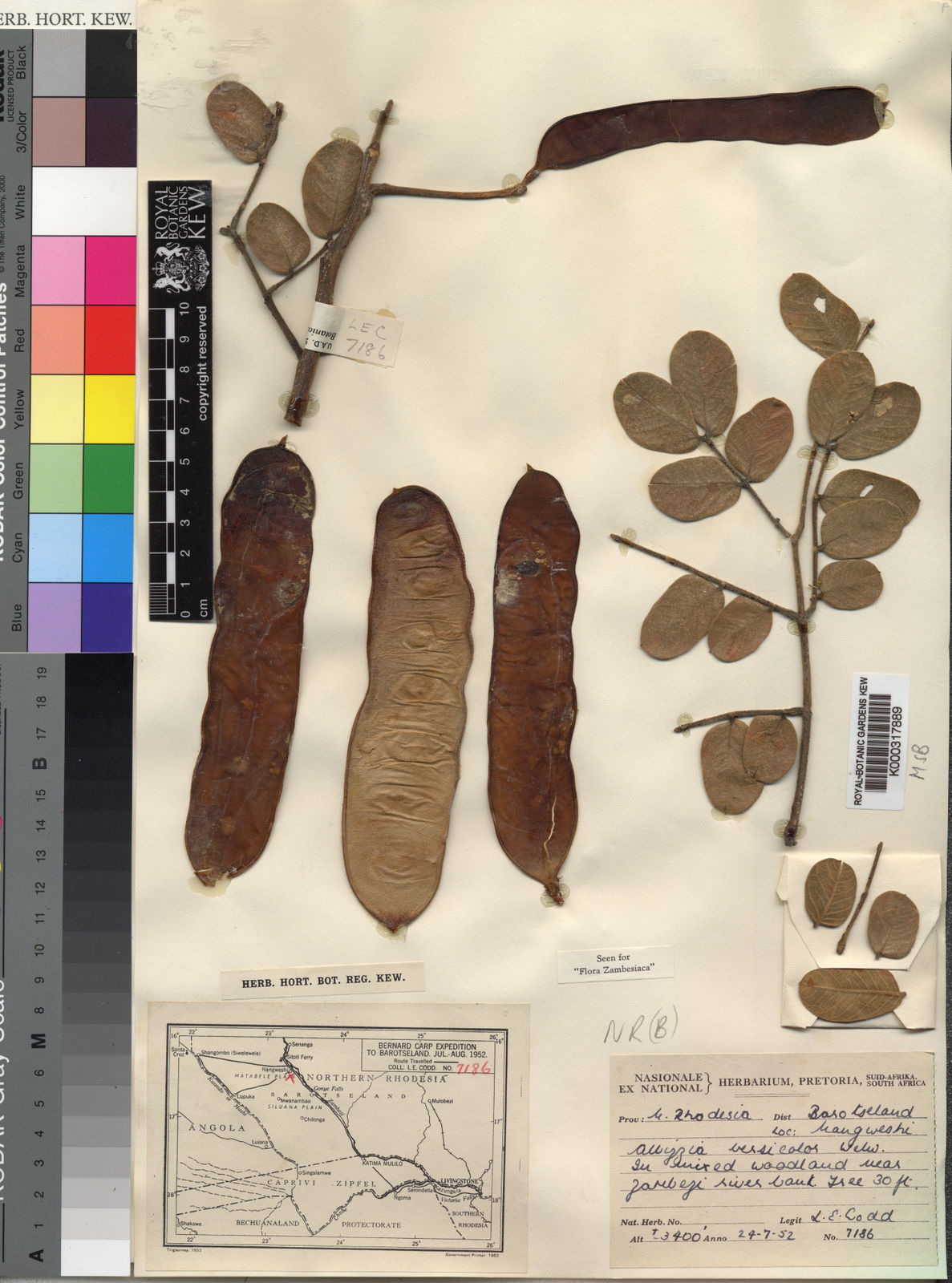Kwao
albizia versicolor
Also known as: ["East African albizia","white albizia"]
Overview
A medium-sized deciduous tree native to East Africa, known for its attractive, feathery foliage and fragrant flowers.
Benefits & Perks
["fragrant flowers","wildlife attractant (bees, butterflies, birds)","shade tolerant"]
Botanical Classification
| Phylum: | Magnoliophyta |
| Class: | Magnoliopsida |
| Order: | Fabales |
| Family: | Fabaceae |
| Genus: | Albizia |
| Botanical Name: | Albizia versicolor |
Plant Characteristics
Basic Information
- Category: Trees
- Suitable Location: outdoor garden in warm climates, or large indoor pot in temperate regions
- Suitable For:
- Is Weed: No
- Allergenicity: low
Environmental Needs
- Climate: {"temperatureRange":"10–35°C"}
- Hardiness: {"zones":"9–11"}
- Misting: rarely required, only if ambient humidity is very low
- Drainage: Fast-draining to prevent waterlogging.
- Soil Type: Well-draining loamy soil with added organic matter.
Maintenance Level
- Maintenance Level: moderate
- Toughness Level: moderate
- Pruning Frequency: Annually in late winter or early spring before new growth begins.
- Pruning Intensity: Moderate; remove up to one-third of old growth if needed.
Care Details
Ideal Sunlight Coverage:
Full sun to partial shade (4–6 hours of direct sunlight daily). Tolerates light shade but may become leggy with insufficient light.
Sunlight Tolerance Tips:
Acclimate gradually to intense sunlight to prevent scorching; protect from harsh midday sun in hot climates; adjust placement based on seasonal light changes.
Care Requirements
Care Difficulty
moderatemoderate
Sunlight
full sun to partial shade
Rotate plant weekly for even growth; use sheer curtains to filter intense light; avoid direct sun on leaves during peak hours.
Watering
every 7–14 days during active growth, reduce in winter
Water thoroughly until runoff, allow soil to dry partially between waterings, and avoid waterlogging.
Soil
well-draining, loamy soil with some organic matter
pH: Slightly acidic to neutral (pH 6.0–7.0).
Use a mix of potting soil, perlite, and compost; avoid heavy clay soils; ensure pots have drainage holes.
Temperature
Prefers warm temperatures (65–85°F / 18–29°C); tolerates mild frosts but thrives in tropical to subtropical conditions.
Protect from frost; ensure good air circulation in heat; adjust watering with temperature changes.
Fertilizing
every 4–6 weeks during growing season with balanced fertilizer
Apply fertilizer after watering to prevent root burn; flush soil occasionally to prevent salt buildup; avoid overfertilizing.
Propagation
Methods
Stem cuttings or seed; stem cuttings are more common for home growers.
Step-by-Step Propagation Guide
- Take 4–6 inch cuttings.
- Remove lower leaves.
- Apply rooting hormone.
- Plant in medium.
- Maintain humidity and warmth.
Best Time: Spring or early summer when the plant is actively growing.
Environment
Warm (75–85°F / 24–29°C), high humidity (70–80%), and bright indirect light.
Medium
Well-draining mix of perlite and peat moss or cactus mix.
Hormone
Recommended to use rooting hormone for faster and more reliable rooting.
Timeline
Roots may develop in 4–8 weeks; establishment may take 3–6 months.
Tools Needed
Pruning shears, rooting hormone, small pots, misting spray bottle, plastic wrap.
Quick Tips
Use healthy, non-flowering stems; maintain consistent moisture; provide bottom heat if possible.
Pruning & Repotting
Pruning Guide
Method
Selective thinning of branches; heading back to encourage branching.
Pruning Plan
Shape the plant, remove dead/diseased growth, and encourage bushier growth; focus on structural improvement.
Tools
Pruning shears, loppers (for larger branches), sterilizing solution.
Checklist
Sterilize tools; prune during dormancy; make clean cuts; remove crossing branches.
Repotting Guide
Best Season
Early spring before active growth starts.
Pot Size
Move to a pot 1–2 inches larger in diameter; avoid oversized pots.
Method
Remove plant gently; trim roots if necessary; use fresh well-draining soil; ensure proper drainage.
Suggestions
Repot every 2–3 years or when roots fill the pot; beneficial for root health and growth.
Checklist
Check root bound status; prepare new pot with drainage; use fresh soil mix; water after repotting.
Advanced Care Tips
Watering Mastery
Watering Checklist
Check soil moisture with finger; water deeply; ensure drainage; adjust seasonally.
How to Apply Water Properly
Water directly at the root zone, ensuring even saturation to a depth of 6–8 inches. Allow excess water to drain freely; water in the morning to minimize evaporation and fungal risk.
Watering Schedule Tips
Water deeply once every 7–10 days during active growth in spring and summer; reduce frequency to every 2–3 weeks in fall and winter when growth slows. Adjust based on rainfall and soil moisture.
Soil Improvement
Add perlite or coarse sand for drainage; incorporate compost for fertility; ensure aeration with organic matter.
Temperature Stress Management
Signs of Temperature Issues
Chlorosis or leaf drop in cold stress; wilting or scorching in excessive heat.
Cold Stress
Growth slows or halts; leaves may yellow or drop; risk of root damage in prolonged cold.
Solution: Move to a sheltered location; provide frost protection; avoid overwatering in cold conditions.
Hot Stress
Leaves may scorch, wilt, or drop; growth may stagnate due to excessive transpiration.
Solution: Provide shade during peak heat; increase humidity; water more frequently but avoid waterlogging.
Fertilizing Guide
Fertilizing Checklist
Check fertilizer type; dilute correctly; apply during growing season; monitor for signs of overfertilization.
Fertilizing Method
Use balanced liquid fertilizer (20-20-20) diluted to half strength every 4–6 weeks during spring and summer; cease in fall and winter.
Common Problems & Solutions
Toxicity Warning
Cats
Non-toxicAlbizia versicolor is not considered toxic to cats. The plant does not contain known toxic substances that would pose a risk to feline health upon ingestion or contact.
⚡ Toxic If:
Generally non-toxic
Dogs
Non-toxicAlbizia versicolor is not known to be toxic to dogs. There are no documented cases of toxicity in canines from exposure to this plant.
⚡ Toxic If:
Generally non-toxic
Humans
Non-toxicAlbizia versicolor, commonly known as the Kiheteri tree, is not considered toxic to humans under normal circumstances. The plant has no known toxic compounds that would cause adverse effects upon ingestion or contact.
⚡ Toxic If:
Generally non-toxic
Frequently Asked Questions
Q: Is Albizia versicolor suitable for small gardens?
A: No, it is a medium-sized tree and requires ample space to grow.
Q: Does Albizia versicolor attract wildlife?
A: Yes, it is known to attract bees, butterflies, and birds with its flowers.
Q: How often should Albizia versicolor be watered?
A: Water moderately, allowing the soil to dry slightly between waterings.
Quick Reference
| Family: | Fabaceae |
| Care: | moderate |
| Light: | full sun to partial shade |
| Water: | every 7–14 days during activ |
Get Expert Care Tips
Download the Plantious app for personalized care reminders and plant identification!
Google Play App Store






